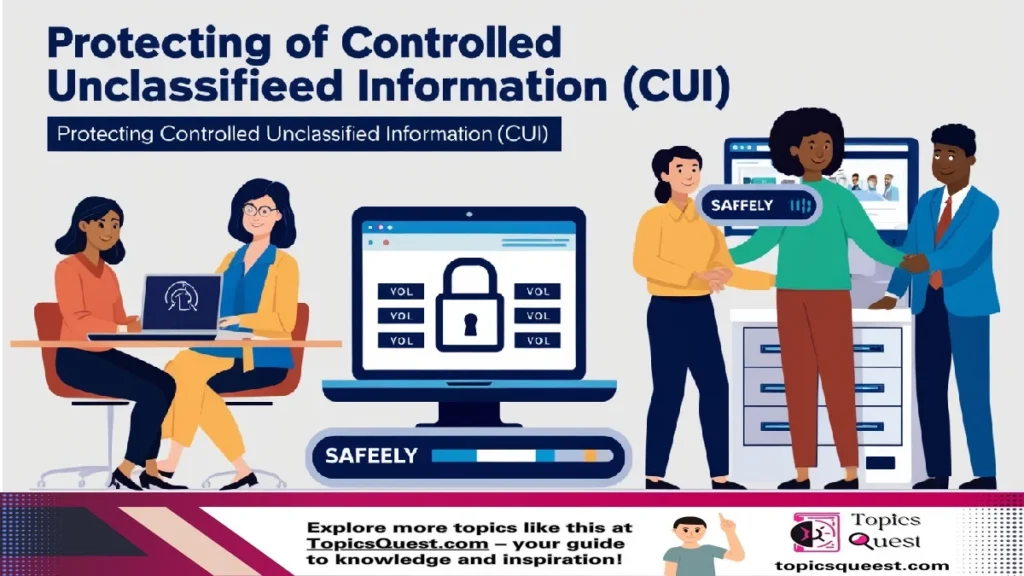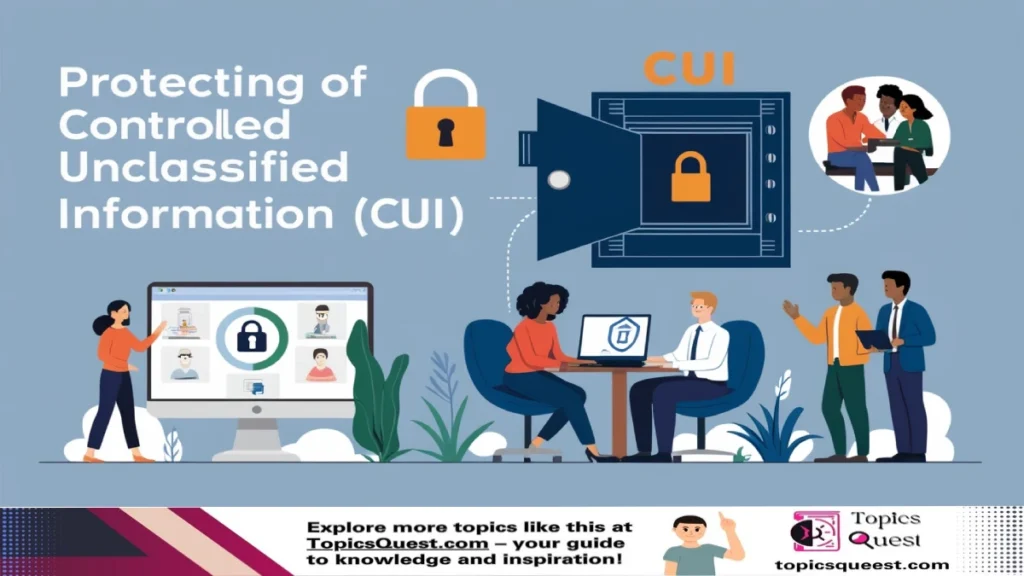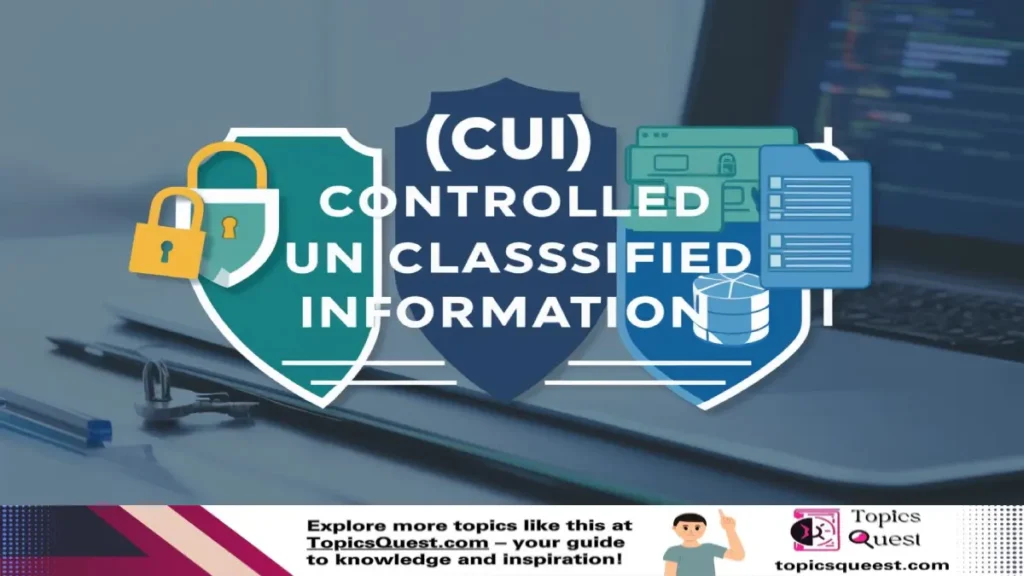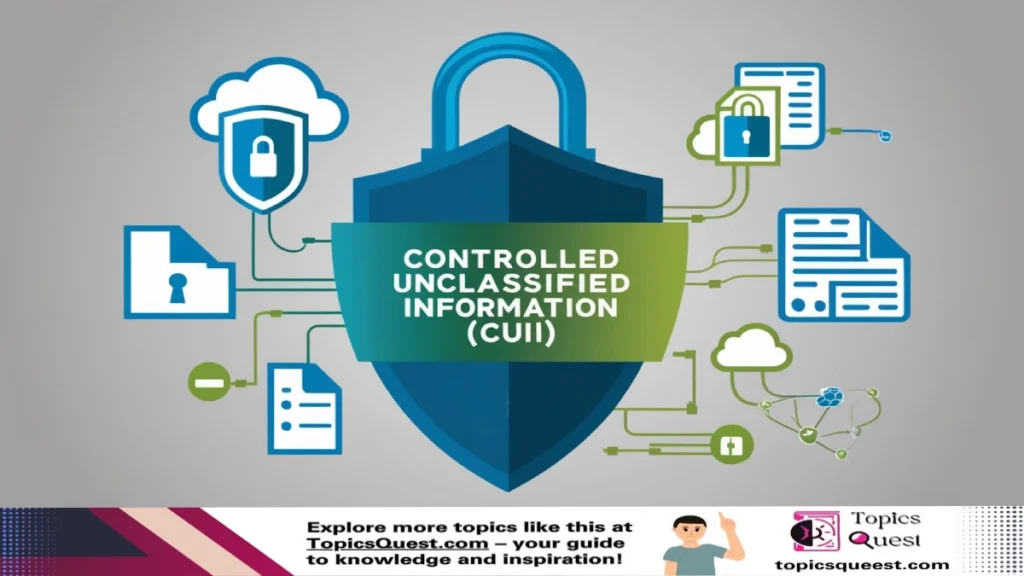|
Getting your Trinity Audio player ready...
|
Controlled Unclassified Information (CUI) typically requires a moderate level of security, which can be quantified in terms of the NIST SP 800-171 framework. This framework outlines 14 families of security requirements, with a total of 110 individual controls.
While there isn’t a specific “level” number assigned to CUI, organizations are generally expected to implement these controls to achieve compliance. The controls are categorized into three levels of impact: low, moderate, and high, with CUI generally falling under the “moderate” impact level.
In summary, for CUI, you should focus on implementing the 110 controls outlined in NIST SP 800-171 to ensure adequate protection.
What is CUI?
Controlled Unclassified Information (CUI) is a type of sensitive information that the government creates or possesses. While it is not classified, it still needs protection to prevent unauthorized access or disclosure. CUI can include personal data, financial information, and other types of information that are crucial to national security.
Table of Contents
Why is CUI Important?
CUI is important because it helps safeguard sensitive information. If this information gets into the wrong hands, it can cause harm. Organizations that handle CUI must take specific steps to protect it and ensure that only authorized people can access it.

What Level of System and Network Configuration is Required for CUI?
Now, let’s answer the big question: What level of system and network configuration is required for CUI? The level of configuration needed depends on several factors, including the sensitivity of the information and the specific regulations that apply.
Basic CUI Requirements
For organizations dealing with CUI, the basic requirements for system and network configuration include:
- Access Control: This means only authorized people can access CUI. You can use passwords, biometric authentication (like fingerprints), and user permissions to control access.
- Encryption: This is like putting a lock on your information. Encryption protects data both when it is stored (at rest) and when it is being sent (in transit). Even if someone unauthorized gets the data, they won’t be able to read it without the right keys.
- Regular Monitoring: You need to keep an eye on your systems and networks. This means checking for unusual activities or breaches. Setting up alerts for unauthorized access attempts is a good practice.
- Security Training: It is crucial to train employees on how to handle CUI safely. This ensures that everyone knows their responsibilities and understands the importance of protecting sensitive information.
- Incident Response Plan: You should have a plan ready for when something goes wrong. This plan should include steps for containment, investigation, and notifying affected parties.
Advanced CUI Requirements
For organizations that deal with more sensitive CUI, additional configurations may be necessary. These can include:
- Enhanced Access Controls:Using multi-factor authentication (MFA) adds an extra layer of security. With MFA, users must provide two or more verification factors to gain access.
- Network Segmentation: This involves dividing the network into smaller parts. This helps limit access to CUI and can contain potential breaches.
- Data Loss Prevention (DLP):DLP tools help monitor and control data transfers. They can prevent unauthorized sharing or leakage of CUI.
- Regular Audits: Conducting regular audits of systems and processes ensures compliance with CUI regulations. This helps identify vulnerabilities and areas for improvement.
- Compliance with NIST SP 800-171: Organizations must comply with the National Institute of Standards and Technology (NIST) Special Publication 800-171, which outlines the minimum security requirements for protecting CUI.

CUI Markings
Marking CUI correctly is essential for ensuring that all personnel understand the sensitivity of the information. The markings help indicate who can access the information and how it should be handled.
Common CUI Markings
- CUI: This marking indicates that the information is controlled and requires protection.
- FEDCON: This marking allows dissemination to both federal employees and contractors.
- FED ONLY: This marking restricts access to federal employees only.
Importance of CUI Markings
CUI markings are crucial because they provide clear guidance on how to handle the information. Properly marked documents help prevent unauthorized access and ensure compliance with regulations.
CUI Confidentiality Levels
When discussing the level of system and network configuration required for CUI, it is essential to consider confidentiality. CUI is classified into different levels based on the sensitivity of the information.

Basic Confidentiality
Basic confidentiality refers to the minimum level of protection required for CUI. Organizations must implement basic security measures, including access controls and encryption, to protect this information.
Enhanced Confidentiality
Enhanced confidentiality applies to more sensitive CUI. Organizations must implement additional security measures, such as multi-factor authentication and network segmentation, to protect this information.
Advanced Confidentiality
Advanced confidentiality is required for the most sensitive CUI. Organizations must comply with strict regulations and standards, including NIST SP 800-171, and implement comprehensive security measures to protect this information.
Quizlet: What Level of System and Network Configuration is Required for CUI?
Quizlet is a fantastic tool for learning about CUI and its requirements. It offers interactive flashcards and quizzes that cover various aspects of CUI, including definitions, requirements, and best practices for protection. Using resources like Quizlet can enhance understanding and retention of critical information related to CUI compliance.
How to Use Quizlet for CUI Learning
- Search for CUI Topics:
Start by searching for terms like “what level of system and network configuration is required for CUI?” on Quizlet. You will find various study sets that can help you learn. - Engage with Flashcards:
Flashcards are a great way to memorize key concepts. You can flip through cards that explain what CUI is, its importance, and the required configurations. - Take Quizzes:
After studying, take quizzes to test your knowledge. This will help reinforce what you’ve learned and identify areas where you may need more practice. - Create Your Own Study Set:
If you want to focus on specific areas, consider creating your own flashcards. This can help you tailor your learning experience to your needs.
Netflix and the Importance of CUI Protection
In light of recent events, Netflix has responded to a massive data leak that exposed unreleased shows and user data, highlighting the critical need for robust security measures to protect Controlled Unclassified Information (CUI). CUI encompasses sensitive data that, while not classified, still requires stringent safeguards to prevent unauthorized access and potential misuse. As organizations like Netflix navigate the complexities of data protection, understanding the necessary system and network configurations for CUI becomes essential. Implementing access controls, encryption, and regular monitoring are just a few of the steps that can help secure sensitive information and maintain user trust. For more insights on the level of system and network configuration required for CUI, explore our detailed article.

Key Takeaways
- Access Control: Ensure only authorized personnel can access CUI.
- Encryption: Protect data at rest and in transit.
- Regular Monitoring: Continuously check for unusual activities.
- Training: Educate employees on CUI handling.
- Incident Response: Have a plan for security incidents.
By following these guidelines and utilizing tools like Quizlet, organizations can better prepare themselves to manage and protect Controlled Unclassified Information effectively. If you have any further questions or need assistance with CUI compliance, feel free to reach out for more information.
Conclusion
In conclusion, understanding “what level of system and network configuration is required for CUI” is vital for organizations that handle sensitive information. By implementing the necessary basic and advanced security measures, organizations can effectively protect CUI and ensure compliance with government regulations.
Additional Resources
To further enhance your understanding of CUI and its requirements, consider exploring the following resources:
- NIST SP 800-171: This document outlines the security requirements for protecting CUI and is essential for compliance.
- CUI Program: The official CUI program website provides valuable information and resources for organizations handling CUI.
- Webinars and Workshops: Look for webinars and workshops that focus on CUI compliance and best practices.
By utilizing these resources, you can deepen your knowledge and ensure that your organization is well-equipped to handle Controlled Unclassified Information securely.
Frequently Asked Questions
What is Controlled Unclassified Information (CUI)?
Controlled Unclassified Information (CUI) refers to information that requires safeguarding or dissemination controls but is not classified under Executive Order 13526 or the Atomic Energy Act. It includes sensitive but unclassified data that must be protected from unauthorized access.
Why is CUI important?
CUI is important because it helps protect sensitive information that, if disclosed, could harm national security, privacy, or other interests. Proper handling of CUI ensures compliance with regulations and promotes data security.
Who is responsible for protecting CUI?
All federal agencies, contractors, and personnel who handle CUI are responsible for its protection. This includes implementing necessary security measures and following established guidelines for safeguarding the information.
What are some examples of CUI?
Examples of CUI include personally identifiable information (PII), financial data, proprietary business information, and certain types of research data. Each category may have specific handling and protection requirements.
What security measures are recommended for CUI?
Recommended security measures for CUI include access controls, encryption, secure storage solutions, employee training on data protection, and regular audits to ensure compliance with CUI handling guidelines.
How can organizations ensure compliance with CUI regulations?
Organizations can ensure compliance by developing and implementing clear policies and procedures for handling CUI, conducting regular training for employees, and performing audits to assess adherence to CUI requirements.
What are the consequences of failing to protect CUI?
Failing to protect CUI can lead to unauthorized access, data breaches, and potential legal consequences. Organizations may face penalties, loss of contracts, and damage to their reputation.
Is CUI the same as classified information?
No, CUI is not classified information. While both require protection, classified information is subject to stricter controls and is designated as such under specific laws and regulations. CUI, on the other hand, is sensitive but not classified.
How can employees be trained to handle CUI effectively?
Employees can be trained through workshops, online courses, and practical exercises that cover the importance of CUI, security protocols, and best practices for handling sensitive information.
What resources are available for understanding CUI requirements?
Resources for understanding CUI requirements include the National Archives and Records Administration (NARA) website, CUI training materials, and federal agency guidelines that outline CUI handling procedures.









2 thoughts on “What Level of System and Network Configuration is Required for CUI?”
Hello There. I found your weblog using msn. This is a
really smartly written article. I will make sure to bookmark it and return to learn more
of your useful information. Thank you for the post.
I’ll definitely comeback.
Hi there, thank you so much for your kind words. I’m really glad you read the article and found the CUI information useful. I also hope you’ll check out our article on Netflix’s response to a massive data leak—it’s full of additional insights that you might enjoy. Thanks again for your support and happy reading!